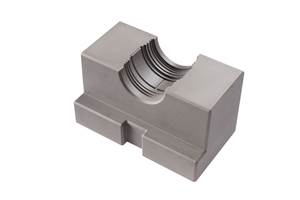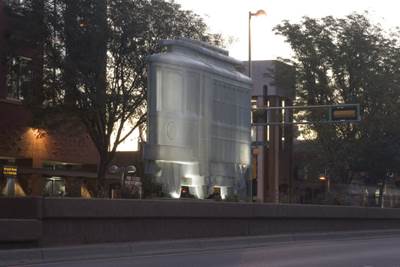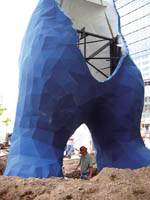Water tree: Single complex mold shapes unique composite sculpture
To fabricate a complex design for a lighted sculpture, sculptor Lawrence Argent taps the talents of composites specialists Kreysler and Assoc. (American Canyon, Calif.).
When Denver, Colo., sculptor Lawrence Argent was selected by the developer of a Vail, Colo., condominium complex to design the facility’s grand outdoor gathering space, he envisioned water, from above and below. Accordingly, his design for one of the plaza’s sculptures, Water Tree, sought to capture the look of a geyser. Argent used Maya software from Autodesk Inc. (San Raphael, Calif.) with a fluid dynamics plug-in to help realize the concept, a complex arrangement of interconnected bubbles supported by curving tubular branches in the shape of an inverted cone. To fabricate the complicated design, Argent turned to long-time composites collaborator Kreysler & Associates Inc. (American Canyon, Calif.).
In order to realize the sculpture, a 3-D CAD model was modified to form four identical quadrants so that only one mold would be required for the complex piece. A CNC cutter was employed to mill low-cost expanded polystyrene (EPS) foam to create the outer mold line surface for the quadrant’s tooling, forming a kind of cradle or temporary armature that would hold the pattern pieces in proper relation to each other, explains Kreysler president Bill Kreysler. Then the team used the CAD data to CNC-machine male plugs for each of the bubbles (see second photo, at right) and branch segments within the quadrant, and they placed the plugs within the corresponding depressions in the cradle. “This is when the ‘craft’ of the project really came into play,” Kreysler adds.
Kreysler shop manager Serge Labesque determined parting lines for the female mold over each bubble and branch to eliminate undercuts and potential part lock in the mold. The process involved three steps: The team painstakingly placed aluminum shims along each plug to define the parting lines. Then, PARTALL wax sealer from REXCO (Conyers, Ga.) was applied liberally to the foam plugs. Finally, fiberglass wet out with polyester was layed up over the plugs (and shims) to create an intricate, multipiece flanged mold (see photo, far right) on a steel support structure.
After it cured, the assembled mold was lifted from its foam cradle and flipped over, becoming the bottom half of the quadrant’s two-part tool. No longer necessary, the cradle was discarded. With the lower halves of the foam plugs for the bubbles now facing up, the process was repeated to make the top half of the tool, resulting again in multiple mold pieces. In the end, 354 mold pieces were fabricated for the quadrant tool. With the two mold halves cured, the multiple pieces, carefully numbered, were disassembled and the foam patterns were removed. A frosted gel coat was sprayed into the mold halves to create a translucent effect. The bubble and branch parts were then layed up in the two reassembled tools, using fiberglass chopped strand mat (CSM) and a polyester resin supplied by Interplastic Corp. (St. Paul, Minn.). The parts were cured at ambient temperature and demolded.
Because finite element analysis had revealed that heavy snow accumulation inside the sculpture’s inverted cone could break the fiberglass support branches (a real possibility in the mountain ski resort), tubular steel was specified inside the fiberglass branches for added support. The steel tubes were carefully fitted into the cured part, passing through the bubbles. At this point, lighting artist Jen Lewin installed a wirelessly controlled LED system in each bubble segment, placing the lights so that the steel tubing is invisible when the sculpture is lit. The lighting system varies the illumination colors at night.
After the lighting was installed, the bubble segments were fitted together and the seams along the parting lines were wet laminated with fiberglass. Then, the bubbles were sandblasted, and another layer of CSM was applied to “even the texture,” says Kreysler. A clear urethane topcoat followed. To create the look of bronze, the branches were sprayed with a bronze metal-filled gel coat. This entire sequence was then repeated three more times to produce the other quadrants. A few additional bubbles were molded separately and added to the branches to enhance the visual impact.
Steel shipping cradles protected the sculpture on its journey to Vail, where it was installed in October 2010. Says Kreysler, “Just because it’s a sculpture doesn’t mean it’s a simple project.” Adds Argent, “This was a completely amazing and intricate project — it is gratifying to work with someone with a true knowledge of fabrication who is willing to take the risk along with me.”
Related Content
Addyx carbon exoskeleton technology enables molded ribs inside hollow composite structures
Using a water-soluble mandrel, carbon exoskeleton opens paradigm for topology-optimized composites, cutting weight, manufacturing time and scrap rate.
Read MoreMetal AM advances in composite tooling, Part 2
Toolmakers and molders continue to realize the benefits of additive versus conventional/subtractive manufacturing of molds and mold components.
Read MoreJEC World 2022, Part 3: Emphasizing emerging markets, thermoplastics and carbon fiber
CW editor-in-chief Jeff Sloan identifies companies exhibiting at JEC World 2022 that are advancing both materials and technologies for the growing AAM, hydrogen, automotive and sustainability markets.
Read MoreMold 3D printing helps automate composite bathtub, shower production
As part of its efforts to automate as much of its production process as it can, Lyons Industries acquired a Massivit 10000 additive manufacturing system to quickly produce high-performance molds and support fixtures.
Read MoreRead Next
Composites help create "ghostly" sculpture of bygone time
Sculptor Lawrence Argent of Argent Studios Ltd. (Denver, Colo. ) recently completed another of his several Denver-area public art installations, an internally illuminated, translucent composite sculpture called Ghost Trolley.
Read MoreComposite Sculpture Bears A Second Look
"Paperless" design and plug-free moldmaking enable cost-effective scale-up of miniature model to massive monument.
Read MoreComposites end markets: Energy (2024)
Composites are used widely in oil/gas, wind and other renewable energy applications. Despite market challenges, growth potential and innovation for composites continue.
Read More



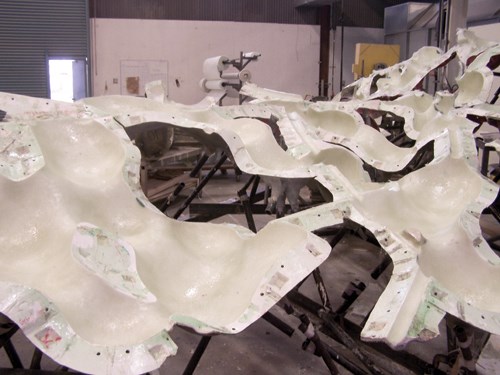
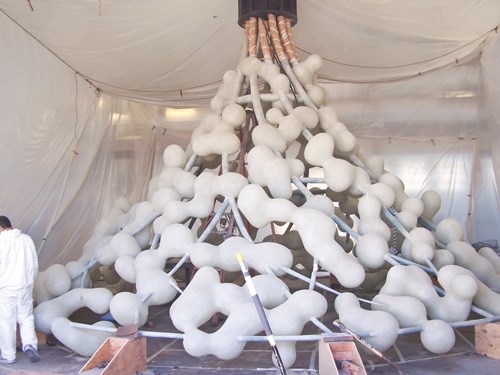
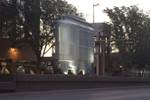
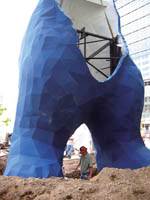












.jpg;maxWidth=300;quality=90)



